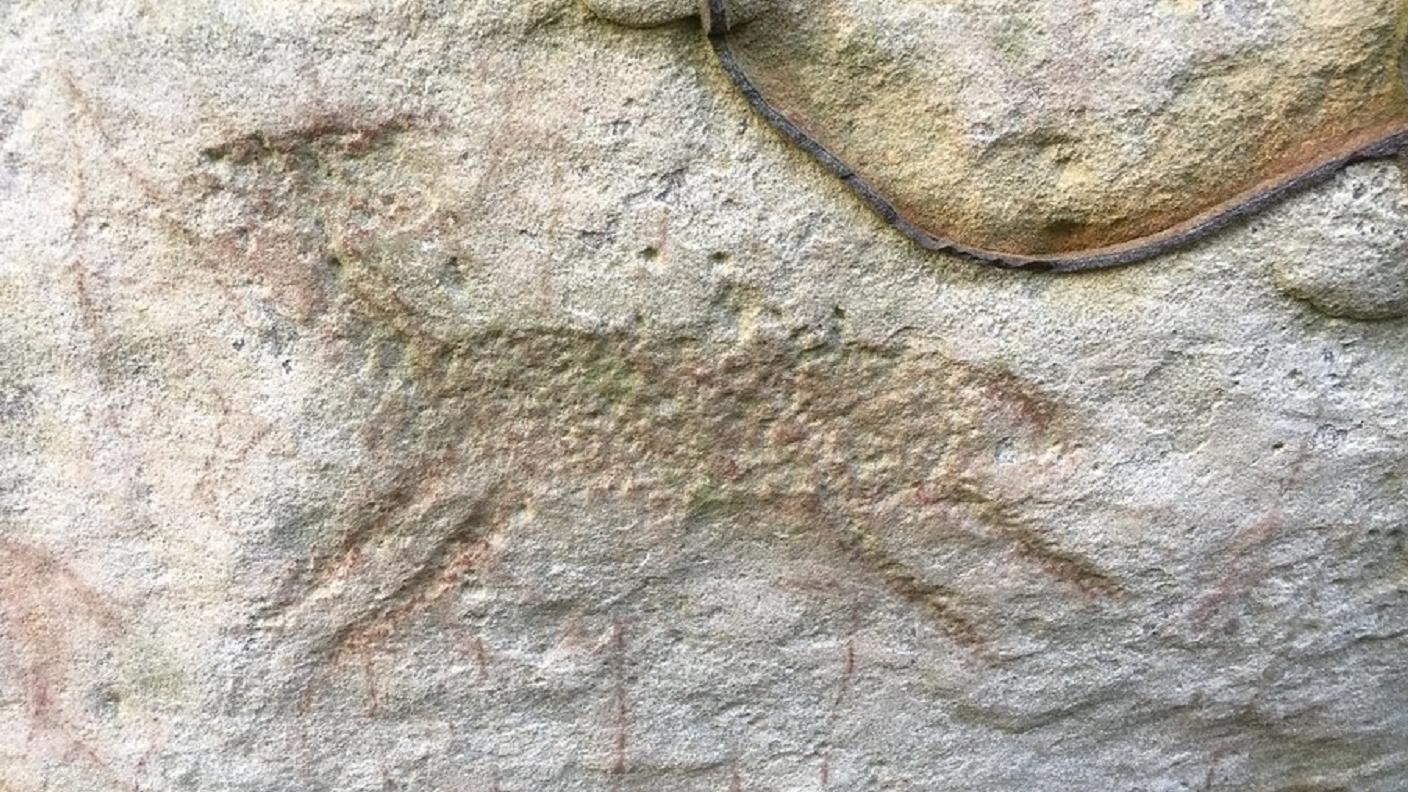Last updated: June 29, 2021
Place
Piney Creek Ravine

"Piney Creek Petroglyphs, Southern Illinois" by infantryturnedtanker is licensed under CC BY-NC-SA 2
Historical/Interpretive Information/Exhibits, Scenic View/Photo Spot, Trailhead
Lewis and Clark NHT Visitor Centers and Museums
This map shows a range of features associated with the Lewis and Clark National Historic Trail, which commemorates the 1803-1806 Lewis and Clark Expedition. The trail spans a large portion of the North American continent, from the Ohio River in Pittsburgh, Pennsylvania, to the mouth of the Columbia River in Oregon and Washington. The trail is comprised of the historic route of the Lewis and Clark Expedition, an auto tour route, high potential historic sites (shown in black), visitor centers (shown in orange), and pivotal places (shown in green). These features can be selected on the map to reveal additional information. Also shown is a base map displaying state boundaries, cities, rivers, and highways. The map conveys how a significant area of the North American continent was traversed by the Lewis and Clark Expedition and indicates the many places where visitors can learn about their journey and experience the landscape through which they traveled.
Piney Creek Ravine is a 198 acre nature preserve that has been protected so that many generations will be able to enjoy its exquisite beauty.When Lewis and Clark were first travelling through Illinois, it was a land of wilderness and lush forests. While there were plenty of towns, including some large ones like Kaskaskia, they were relatively sparse. After all, at the time anything past West Virginia was considered unpredictable and dangerous.
Piney Creek offers a lot for both nature and history lovers to enjoy. There is a wide range of plant life and countless beautiful trees. In fact, it’s one of two places that short-leaf pines grow in the state of Illinois. Piney Creek is very protective of its wildlife, so much so that visitors will have a good chance of seeing the charming local wildlife, including deer, chipmunks, foxes, snakes, salamanders, and turtles.
There are many dramatic vistas to be seen while hiking in the ravine, including a waterfall; but the most unique and historical findings in the ravine are petroglyphs. Piney Creek has an impressive collection of Native American rock art from the Late Woodland and Mississippian periods, most of which were likely created for religious purposes, according to archeologists. Visitors will be able to see beautiful art that ranges from around 500 to possibly over 1500 years old.
